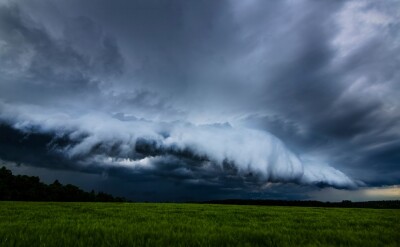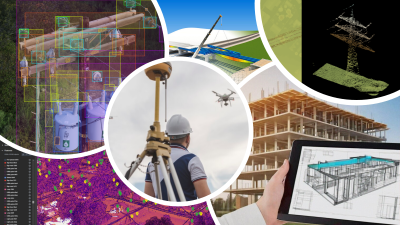Although the recent hype around artificial intelligence has largely focused on generative AI tools like those created by OpenAI, Anthropic, and others, more “traditional” forms of AI, machine learning, and computer vision have benefited as well. Between increased investment in nearly any product that mentions 'AI,' along with more accessible computing power, AI-powered tools are improving at a rapid pace.
Nearly every industry around the world is in the process of finding ways to put AI into their workflows, but the geospatial industry is among those that stand to benefit the most from this boom. Given the relative lack of workers in this field and the vast amounts of data generated within it, it is ripe for disruption from AI models and tools to gain key insights that can benefit both commercial and public organizations. As such, we’re seeing more tools made available for the industry to create these models.
One example of this comes from IBM, who has recently made available a free preview of their Environmental Intelligence offering. This, of course, is not the company’s first foray into creating a tool for the geospatial industry, as last year they announced an open source foundation geospatial model that they created in partnership with NASA.
In a conversation with Geo Week News, IBM Principal Product Manager for their Environmental Intelligence Suite, Aditya Khosla, notes that the preview comprises a set of APIs and an SDK, adding that it’s designed to provide both data scientists and developers with accurate environmental insights.

He continued, “What we really do is, in a lot of cases, do the work of processing, normalizing, and harmonizing a lot of the data that we offer and make those available via an API.” That data is a combination of Earth observation data from satellite imagery as well as weather and climatology data.
Digging a little bit deeper into what users can get from the Environmental Intelligence Suite, Khosla shares that there are three “main categories” of APIs. The first is the geospatial API, which he describes as being “a large temporal storage for all geospatial data that we've essentially processed through public data sets as well as proprietary data sets.” Users are taking advantage of this API to do their own analysis using the aforementioned datasets, including data from Sentinel-2, to derive their own specific insights.
In addition to the geospatial API, the Environmental Intelligence Suite also includes IBM’s “history on demand” API. This leverages the company’s strategic partnership with The Weather Company and takes aggregated current and historic weather data with which organizations can run their own predictive analysis. This is largely used by agriculture companies, and Khosla says it’s used “as an accelerant to have anyone who's interested in using historical weather data to build a model for predictive analysis.”
The third and final API is the greenhouse gas emissions API, a stateless API that is designed to “translate activities of any kind, whether that's scope one, scope two, scope three, emissions into a carbon dioxide equipment.” This is obviously important information for companies as more regulations are being passed all around the world that require organizations to have a full understanding of their carbon emissions, and being able to better predict those metrics will streamline and improve workflows across industries like infrastructure, logistics, and plenty of others. Khosla also mentions financial institutions as a sector that is interested in these insights to validate carbon credits from their customers.

In terms of what the future holds for the Environmental Suite, it is of course going to move out of preview at some point. Khosla points to the first quarter of 2025 when a full commercial offering will become available, though free trials will still be available at that point as well. There will be more available at that time as well, including more insights being made available from the aforementioned geospatial foundation model created in concert with NASA.
The focus right now for that initial release will be around above ground biomass estimation, but they are also building fine-tuned models for flood and fire detection, as well as land change assessments, according to Khosla. Down the road, he also indicates that IBM hopes to release a “fine-tuning studio” that allows users to bring in their own data and “really accelerate how they can work with geospatial data.
They’re also listening to feedback from those who have already been using these APIs. For example, Khosla notes that one piece of feedback they’ve gotten is that users would like to see a global map. He says that today, most of their insights have been localized to try and make things as accurate as possible, but they intend to go to a global map. Additionally, while they currently offer their insights at a 30x30 meter resolution, they’re planning to bring in Sentinel-1 data that will get them to a 10 meter resolution.
Ultimately, the goal for IBM and Khosla’s team more specifically is to allow their users to get the most out of their geospatial data and glean the important insights as easily as possible. He notes that they will continue, through IBM Research, contribution to the open source community. He also notes, “We’re embedding a lot of these environmental intelligence capabilities in some of our other offerings. Our partners will generally work with either Maximo or Envizi, and those kinds of solutions can benefit from these kinds of insights.”






